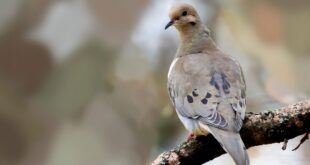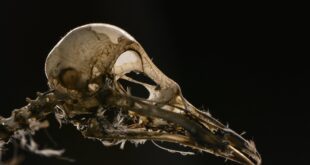Enter the ultimate featherweight showdown: Crow vs Raven vs Blackbird! Ever tried to tell these black beauties apart?
We’ll unravel this avian mystery with fun facts, handy tips, and irresistible reasons to become a bird-watching pro.
Crow vs Raven vs Blackbird: Physical Characteristics:
Raven, Crow, and Blackbird share many physical similarities, but they also have some important differences.
Here is a comparison of some of their key physical characteristics:
Size:
Ravens are the largest of the three, measuring up to 26 inches in length and weighing up to 4 pounds.
Crows are slightly smaller, measuring up to 18 inches in length and weighing up to 1 pound.
Blackbirds are the smallest of the three, measuring up to 10 inches in length and weighing up to 3 ounces.
Wingspan:
Ravens have the largest wingspan, measuring up to 4 feet from wingtip to wingtip.
Crows have a wingspan of up to 3 feet.
Blackbirds have a wingspan of up to 1.5 feet.
Color:
Ravens are typically black with a metallic sheen.
Crows are black with a duller sheen.
Blackbirds are black with a yellow eye and a distinct yellow beak.
Beak:
Ravens have a large, curved beak that is adapted for tearing meat and cracking open nuts.
Crows have a smaller, straighter beak that is adapted for scavenging and probing for insects.
Blackbirds have a smaller, pointed beak that is adapted for catching insects and small invertebrates.
Bird Calls:
Ravens have a distinctive croaking call that is often compared to a deep, throaty “cronk.”
Crows have a harsher, cawing call that is often used as a warning signal.
Blackbirds have a melodic, flute-like song that is used to attract mates and defend territories.
Reproduction and Mating:
Raven, Crow, and Blackbird have different mating cycles and behaviors.
Here is a comparison of their reproductive and mating characteristics:
Mating Cycles:
Ravens are monogamous and typically mate for life. They form pair bonds during the breeding season, which typically begins in January or February.
Crows are also monogamous and form pair bonds during the breeding season, which begins in late winter or early spring.
Blackbirds are generally polygamous, with males mating with multiple females during the breeding season, which begins in late April or early May.
Clutch Sizes:
Ravens typically lay 3-7 eggs per clutch, while crows lay 3-6 eggs per clutch.
Blackbirds lay 3-5 eggs per clutch, and because they are polygamous, males will mate with multiple females and may have multiple clutches in a season.
Parenting Behaviors:
Ravens and crows both share parenting duties, with both parents helping to build the nest, incubate the eggs, and feed the chicks.
Blackbirds, on the other hand, are less involved in parenting. The female will build the nest and incubate the eggs, while the male will defend the territory.
Life Expectancy and Common Predators:
Raven, Crow, and Blackbird have different life expectancies and are preyed upon by different predators.
Here is a comparison of their life expectancies and common predators:
Life Expectancy:
Ravens are the longest-lived of the three, with a life expectancy of up to 21 years in the wild.
Crows have a life expectancy of up to 8 years in the wild.
Blackbirds have a life expectancy of up to 4 years in the wild.
Common Predators:
Ravens are apex predators and have few natural predators, although they may occasionally fall prey to large predators such as wolves or bears.
Crows are also relatively free of predators, although they may be preyed upon by larger birds of prey such as eagles or hawks.
Blackbirds are more vulnerable to predators and are often preyed upon by cats, snakes, and birds of prey.
Habitat:
Raven, Crow, and Blackbird have different preferred habitats, nesting sites, and migration patterns.
Here is a comparison of their habitat characteristics:
Preferred Habitats:
Ravens are adaptable and can be found in a variety of habitats, from forests to deserts to tundra.
They tend to prefer open habitats, such as grasslands or agricultural fields, where they can forage for food.
Crows are also adaptable and can be found in a wide range of habitats, including urban areas, forests, and farmland.
Blackbirds are more restricted in their habitat preferences and are typically found in wetland areas or near bodies of water.
Nesting Sites:
Ravens and crows both prefer to nest in trees or on high structures such as buildings or poles.
Ravens tend to build large, bulky nests made of sticks and lined with soft materials such as fur or feathers.
Crows build smaller, more compact nests made of twigs and lined with softer materials such as moss or grass.
Blackbirds prefer to nest in dense vegetation, such as shrubs or reeds, and build cup-shaped nests made of grass and other plant materials.
Seasonal Migration Patterns:
Ravens and crows are non-migratory and can be found in their preferred habitats year-round.
Blackbirds are migratory and typically breed in the northern parts of their range and winter in the southern parts.
They migrate in flocks and can travel long distances to reach their wintering grounds.
Cultural Significance and Folklore:
Raven, Crow, and Blackbird have played important roles in the cultural and mythological traditions of various societies around the world.
Here is a closer look at their cultural significance:
Cultural Significance:
In many Native American cultures, the Raven is considered a trickster spirit who can transform and shape-shift into different forms.
The Crow is also a significant figure in Native American folklore and is often associated with creation myths and as a messenger to the spirit world.
In European cultures, the Blackbird is often associated with mysticism and the supernatural, with its black feathers and haunting song inspiring myths and legends.
Representation in Art, Literature, and Mythology:
Raven, Crow, and Blackbird have been featured prominently in art, literature, and mythology for centuries.
For example, in Norse mythology, the god Odin had two crows named Huginn and Muninn who served as his messengers.
In Edgar Allan Poe’s famous poem “The Raven,” the bird is used as a symbol of death and loss. Blackbirds have been featured in various works of literature, such as the novel “Blackbird House” by Alice Hoffman, which uses the birds as a symbol of hope and renewal.
Symbolism and Meaning:
The symbolism and meaning associated with Raven, Crow, and Blackbird vary depending on the culture and context.
In many cultures, the birds are associated with death, darkness, and the supernatural. In other cultures, they are seen as messengers, tricksters, or symbols of wisdom and intelligence.
In some cultures, the birds are considered sacred and are associated with powerful deities or spirits.
Threats and Conservation Efforts:
Despite their adaptability and intelligence, Raven, Crow, and Blackbird populations face a number of threats, including habitat loss and climate change.
Here is a closer look at the threats and current conservation efforts aimed at protecting these birds and their habitats:
Threats:
Habitat loss and degradation is a major threat to Raven, Crow, and Blackbird populations, as the destruction of wetlands, forests, and other habitats can limit their access to food, nesting sites, and other resources.
Climate change is also a significant threat, as it can disrupt the timing of breeding cycles and alter the availability of food sources.
Other threats include pollution, predation, and hunting.
Conservation Efforts:
A number of conservation efforts are underway to protect Raven, Crow, and Blackbird populations and their habitats.
These efforts include habitat restoration and management, as well as captive breeding programs for species that are particularly vulnerable to extinction.
Additionally, public education campaigns are raising awareness about the importance of protecting birds and their habitats, and working to reduce human activities that threaten these birds.
Potential Impact:
Effective conservation efforts have the potential to help protect Raven, Crow, and Blackbird populations and the ecosystems in which they live.
By reducing habitat loss and degradation, addressing the impacts of climate change, and reducing other threats, conservation efforts can help ensure the long-term survival of these birds and the biodiversity of the ecosystems in which they live.
Is a blackbird the same as a Crow?
No, a blackbird is a different species of bird from a crow. While they may look similar, they have different physical characteristics, behavior, and habitat preferences.
Are a crow and raven the same bird?
No, a crow and raven are not the same bird. While they are both members of the Corvidae family and share some physical similarities, they have important differences in their size, wingspan, color, beak shape, and bird calls.
Is Crow better than raven?
There is no inherent superiority between crows and ravens. They are both highly intelligent and adaptable birds that have evolved to thrive in a variety of ecological niches.
Why is a crow called a raven?
Crows and ravens are two different species of bird, although they may be similar in appearance. The name “crow” comes from the Old English word “crawe,” while the name “raven” comes from the Old Norse word “hrafn.”
How long do ravens live?
Ravens can live up to 21 years in the wild, although their lifespan may be shorter in captivity or in areas with high predation rates.
Do blackbirds migrate?
Yes, blackbirds are migratory birds that breed in the northern parts of their range and winter in the southern parts. They migrate in flocks and can travel long distances to reach their wintering grounds.
Unlocking the Secrets of Raven, Crow, and Blackbird: Insights into the Ecology and Behavior of Corvids
Raven, Crow, and Blackbird are all members of the Corvidae family and share many physical similarities.
However, they also have important differences in their size, wingspan, color, beak shape, bird calls, reproductive and mating characteristics, life expectancies, and habitat preferences.
Studying these birds provides valuable insights into the ecology and behavior of birds, as well as our cultural heritage.
In ecological contexts, studying these birds can help us understand the complex relationships between birds and their environments, including the adaptations they have developed to survive and thrive in different habitats.
For example, studying the different nesting sites and behaviors of Raven, Crow, and Blackbird can help us understand the importance of vegetation structure in providing habitat for birds.
In behavioral contexts, studying Raven, Crow, and Blackbird can provide insights into the evolutionary and ecological processes that have shaped their behavior over time.
For example, understanding the different reproductive and mating strategies of these birds can help us understand the diversity of reproductive strategies in birds.
 Access Birds Let’s Make The World A Happier, Healthier Place For Birds.
Access Birds Let’s Make The World A Happier, Healthier Place For Birds.




